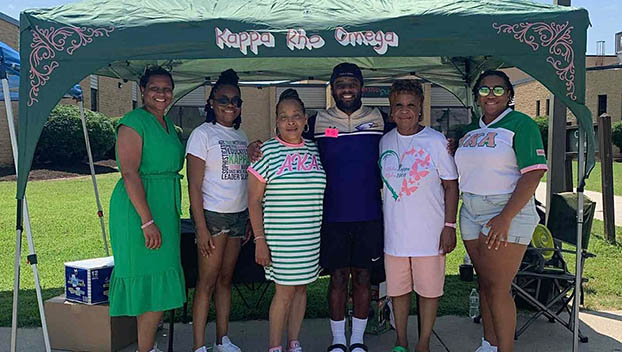Could housing proposal help Lunenburg County recruit business?
Published 10:00 pm Monday, August 19, 2024
|
Getting your Trinity Audio player ready...
|
Employers in Lunenburg County, along with others in Southside and Southwest Virginia, have raised one problem. There’s not enough housing their workers can afford. It’s also been a problem pointed out when trying to recruit new companies into these areas. Where will the workers live? A new pilot program, set up by the Virginia Tobacco Region Revitalization Commission, looks to address that by providing incentives to increase the amount of workforce housing available.
According to data provided by the Tobacco Commission, the program is designed to make the commission’s footprint — 40-some counties, towns and cities in Virginia, including Lunenburg — more attractive to economic development by directly addressing a major concern of potential employers: insufficient housing for their workforce.
“We in the economic development community are at increasing concern about the lack of available housing for the workers for the companies that we are recruiting,” said Jordan Butler, public relations director for the Tobacco Commission. “Southern and Southwest Virginia have seen a lot of success in recent years in economic development, but housing for those workers has not kept up. This shortage is increasingly a concern for employers looking to come to the region.”
Trending
Butler said there is a lack of workforce housing — the type that can be afforded by folks making approximately 80% to 120% of the area median income. “The market has not been producing this type of housing in the region,” he said. “The commission wanted to be part of the solution for this problem.”
Southside, Southwest struggling with housing
And he’s not wrong. A Dec. 2021 report by Virginia’s Joint Legislative and Audit Review Commission found that 29% of households in the state struggle with housing costs. Nearly half of those spent more than 50% of their income on housing, both rental and owned. And as mentioned, it’s a problem here locally. The study found 67% of households struggling with housing costs either lived in this region or in Northern Virginia.
So what’s causing this problem? Housing prices keep rising. Zillow data shows the average home value in Virginia reached $385,780 by March of this year. That’s a 5.8% year-over-year increase. Another key piece is that in the last three years alone, Virginia’s supply of “starter” homes, those usually more affordable to low-and-middle-income households, has dropped by 40%, according to the Virginia Realtors Association.
A starting investment in Lunenburg County
An initial $2 million investment funds the pilot program as it stands now.
Applications for the program must be made by political subdivisions of the state — counties, towns or cities — on behalf of a housing developer, which may be for-profit or non-profit. Commission staff assess the project’s eligibility for funding. Each project must meet a number of requirements.
Up to $35,000 per housing unit will be provided for approved projects. The units can be for rent or sale, and can be new construction or repurposed buildings. The incentive money can be spent on site development, infrastructure or direct housing construction costs — essentially, defraying the cost of building a project in exchange for making the housing affordable to workers.
Trending
The housing must meet affordability requirements, and the applicants must show a demand for housing and explain how the new jobs will affect that demand. Applicants must also show proof of a funding gap and demonstrate that they have already used different funding sources.
The funds require a minimum three-to-one match, and awards must be tied to a certain economic development project. Each recipient locality like Lunenburg County must have a workforce housing plan in place or create a plan that meets the needs of the incoming employer.
Involvement of multiple partners as well as investments by the employer, such as a savings match for their employees or subsidized transportation to and from work, will strengthen proposals for the incentives.
The guidelines for the program are written to provide flexibility to the group that is putting together the housing project so that unique needs can be met, said Stephen Versen, the deputy director of the commission.
“There’s a lot we don’t know about how these projects will come together,” he said. “But it’s time to have the conversation and be part of the solution.”
More about the Tobacco Commission
The commission’s funding generally comes from the 1999 Master Settlement Agreement entered into by the four major tobacco companies with 46 states. “They agreed to pay, in perpetuity, those states monies to offset the costs of the damages of smoking,” Butler said.
The 28-member Tobacco Commission in Virginia has invested some of the money and has leeway to use the money for economic development and workforce development initiatives, in Lunenburg County and the surrounding region.
They have been successful at doing so, Versen said.
“The commission has a history of identifying a need that’s not yet being met by a program and stepping in to fill the gap,” he said. For example, it has previously invested into industrial sites as well as broadband initiatives — both of which are also necessary for economic development — which has inspired the state and federal governments to do the same.
“If it’s successful, we hope to be able to hand off our successful model to someone with a lot more money,” Butler said. “The benefit is going to be in our ability to attract those big employers. If you have this much available housing and the ability to attract those employers, then you have more money to pay for schools; you have more money to pave roads. It’s also a quality of life thing for the folks living in these communities.”





